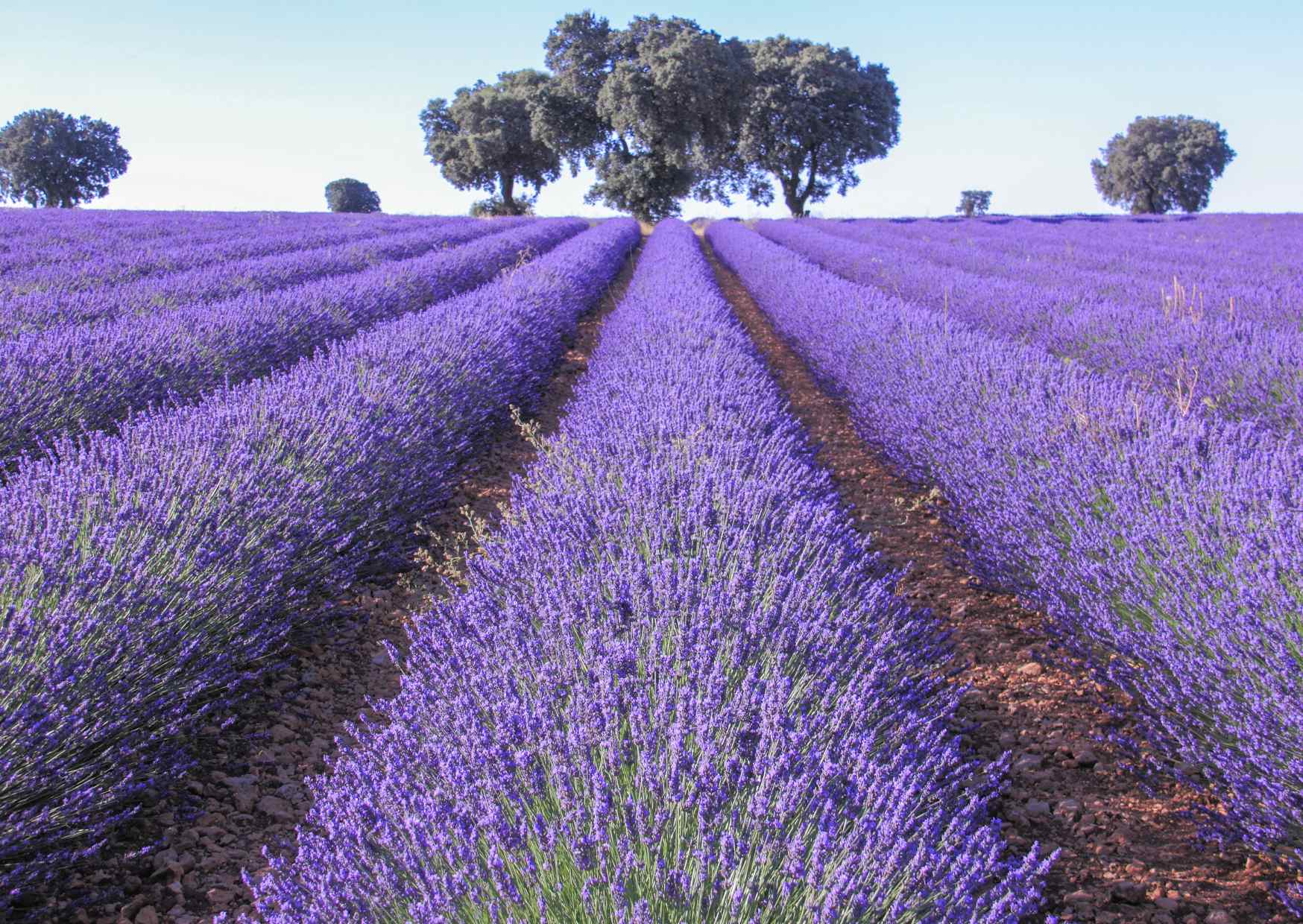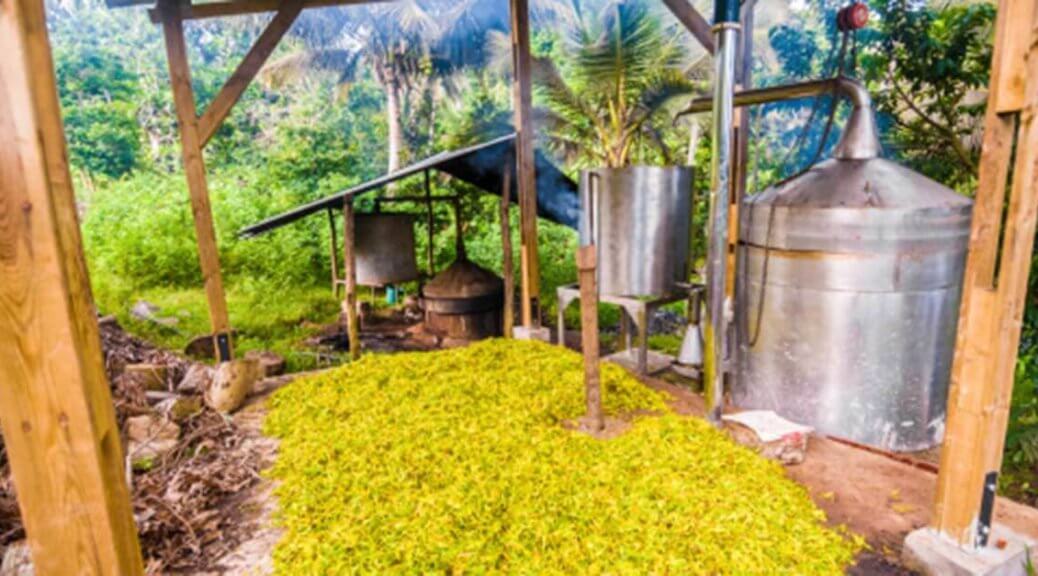Extraction refers to how the essential oil is removed from the plant material and made available for use. There are several methods of extraction. Each has benefits and depends on the type of plant material and the types of compounds you want in your final oil. Distillers may use one or more methods of extraction for different plants.

Cold Press Extraction
Reserved for citrus extraction. The citrus fruits are rotated against rollers and bruised. The essential oil is released into a collection vessel also containing water. The water is siphoned off, leaving the oils behind since they float in the top. This method is good for citrus, since it’s not subjected to heat. The heat may destroy some of the compounds in citrus oils.
Steam Distillation
The vast majority of essential oils are created this way! For this method, steam from a boiler in piped into a vessel containing the plant matter. The volatile compounds (essential oil) are released and move through a condensing tube into a collection vessel. This vessel contains water, which is the hydrosol. The essential oil floats on the surface of this liquid. Later, the water/hydrosol/floral water is decanted off leaving the essential oil for bottling.
The benefit here is the speed at which this can be completed. Again, some compounds can be subjected to degradation under high heat conditions. If the process can be quick, the degradation can be controlled.

Solvent Extraction
Reserved for oils in which compounds would be damaged by traditional steam distillation.
Flowers too delicate to be processed with heat are soaked in a solvent, usually hexane that extracts the volatile elements. The solvent is then evaporated leaving only the most fragrant constituents behind. This process produces what is called an “absolute”. Here is a more in-depth step-by-step process:
- Plant material is macerated in a solvent, usually hexane
- After several days the solvent is removed, leaving the viscous, fragrant concrete
- The concrete is dissolved with high-proof alcohol
- The mixture is chilled and separates into plant waxes and fragrant tincture
- The fragrant tincture is vacuum distilled to evaporate off the alcohol, leaving an absolute
CO2 Extraction
Much like absolute, CO2 extracts are created using solvent extraction, in this case, CO2. Under pressure, CO2 gas transforms into an “almost” liquid state called the supercritical state. Plant material goes through an airtight receptacle, and carbon dioxide gas is pumped under pressure; low heat is also applied to aid extraction. As the pressure inside the container rises, the CO2 gas nearly liquifies, bathing the plant material in supercritical CO2. The combination of high pressure and low temperatures encourages the plant material to releases its aromatic components. After a period of time, the pressure reduces and the supercritical CO2 then changes back to its gaseous state, completely dissipating from the extracted material.
Because lower temperatures occur during the process, heat-sensitive plant components that may be destroyed or inactivated during steam distillation are preserved in the CO2 extract. The combination of lower temperatures and (generally) lower pressure means that CO2 extracts contain more of a plant’s original constituents than steam distilled oils and smell more like the original plant material.

Hydrosols or Floral Waters
The water that is siphoned off prior to bottling essential oils. After distillation, the essential oil is floating on the surface and there is water below. THAT water is the hydrosol. These are perfect for everyday use, having many of the benefits of essential oils, but in a much gentler form. Good for cuts, scrapes, and for use with children.
You can tell right on the website what type of extraction was used for your essential oil! If this information isn’t found on the label, most websites have it available to you! It’s just another important piece to the puzzle! If you have any concerns or questions please feel free to contact one of our on-staff aromatherapists at aromatherapist@planttherapy.com! Also, join our Facebook group Safe Essential Oil Recipes.



